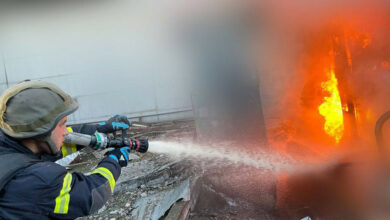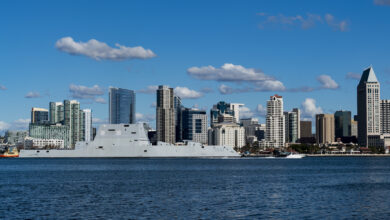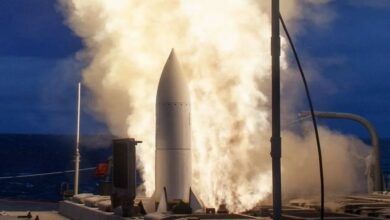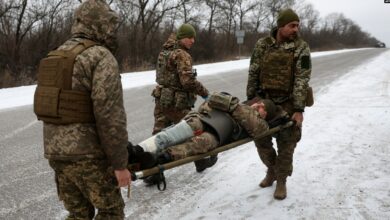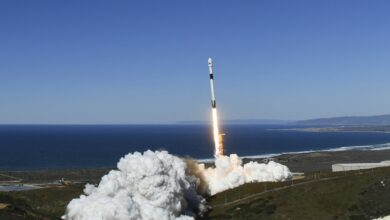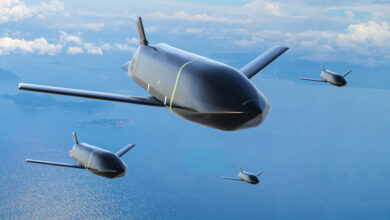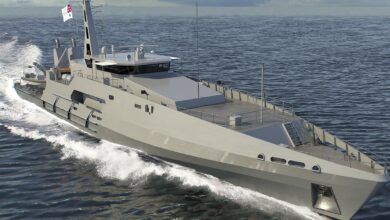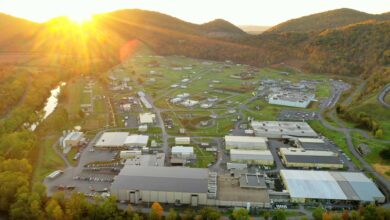North Korea fires missiles in second launch in days
North Korea welcomed a U.S. envoy’s visit to Seoul by firing two missiles Thursday, May 9, the South’s military said, in Pyongyang’s second launch in less than a week as it seeks to up the ante in deadlocked nuclear negotiations with Washington.
It came after North Korea carried out a military drill and fired multiple projectiles on Saturday, when at least one was believed to be a short-range missile.
The North had not previously fired a missile since November 2017, shortly before a rapid diplomatic thaw eased high tensions on the peninsula and paved the way for a historic first meeting between its leader Kim Jong-un and U.S. President Donald Trump.
But their second summit in Vietnam in February broke up without an agreement rolling back Pyongyang’s nuclear program in exchange for sanctions relief or even a joint statement, leaving the North frustrated by the stalemate.
Thursday’s launch came hours after the U.S. Special Representative on North Korea, Stephen Biegun, arrived in Seoul late Wednesday for talks with South Korean officials on the allies’ approach towards Pyongyang, in his first visit since the Hanoi summit.
The North “fired what appeared to be two short-range missiles,” Seoul’s Joint Chiefs of Staff said in a statement, adding they flew eastwards for 270 and 420 km (170 and 260 miles) and the South Korean and U.S. militaries were jointly analyzing them.
It earlier said the launched appeared to originate from Sino-ri in North Pyongan province, 75 km northwest of Pyongyang.
One of the North’s longest-running operational missile bases is in the area, which the Centre for Strategic & International Studies says houses a regiment-sized unit equipped with Nodong-1 medium-range ballistic missiles.
Biegun met his South Korean counterpart Lee Do-hoon for breakfast on Thursday but much of his schedule was not made public.
The U.S. envoy is due to meet the South’s foreign and unification ministers Friday as the security allies – Washington stations 28,500 troops in the South to defend it from its neighbor – work on their approach towards Pyongyang.
With Thursday’s launch, said Hong Min, a senior researcher at the state-run Korea Institute for National Unification, “North Korea is sending a clear message that it will not be satisfied with humanitarian aid” being considered by Seoul.
“It is saying, ‘We want security guarantees in return for the denuclearisation process’,” he added.
“Kim could have felt he needed to show a strong military posture to ease complaints following a joint South-U.S. military drill last month.”
‘Stop nonsense’
Pyongyang, Seoul and Washington had all refrained from explicitly calling Saturday’s launch a missile – the South used the term “projectile” – which could jeopardize the ongoing diplomacy by violating UN Security Council resolutions as well as Kim’s announcement of an end to long-range missile tests.
But experts said at least one short-range missile was involved, with a report on the respected 38 North website suggesting that it was a “direct import” of a Russian-produced Iskander.
“The debris generated by the launch in North Korea is a virtual match of a launch of Iskander conducted by Russia,” it said.
If North Korea imported Iskanders from Russia, the report added, “it has an existing capacity to deliver warheads to targets in South Korea with great precision.”
Pyongyang insisted earlier Thursday that Saturday’s “routine drill” was conducted within its own waters and added the “flying objects” did not pose any threat to the U.S., South Korea and Japan.
“The firing of the intermediate- and long-range missile and the ICBM was not involved in it,” a spokesman for the North’s delegation for military talks with the South said in a statement carried by the official Korean Central News Agency.
He condemned Seoul’s criticism of that launch, with KCNA’s headline reading: “S. Korean military authorities urged to stop nonsense.”
Visits fall
A summit between South Korean President Moon Jae-in and the North’s Kim a year ago was instrumental in lowering the temperature, but since Hanoi the North has blamed Seoul for siding with Washington, leaving inter-Korean relations in limbo.
The number of South Koreans visiting the North has slumped this year, figures showed.
All civilian communication between the two countries – which remain technically in conflict after the 1950-53 Korean War ended with an armistice instead of a peace treaty – is banned and South Koreans need government approvals to travel north.
So far this year only 617 have been granted permission, the unification ministry said, little more than the monthly average during 2018, when a total of 6,689 Southern citizens went North to attend government meetings, sports games, cultural and reunions for families separated since the war.
“Due to domestic and foreign political events since the U.S.-North Korea summit in Hanoi, it has decreased somewhat since last year,” the ministry said in a statement.
US suspends ‘Vigilant Ace’ military exercise with South Korea
With reporting from AFP


